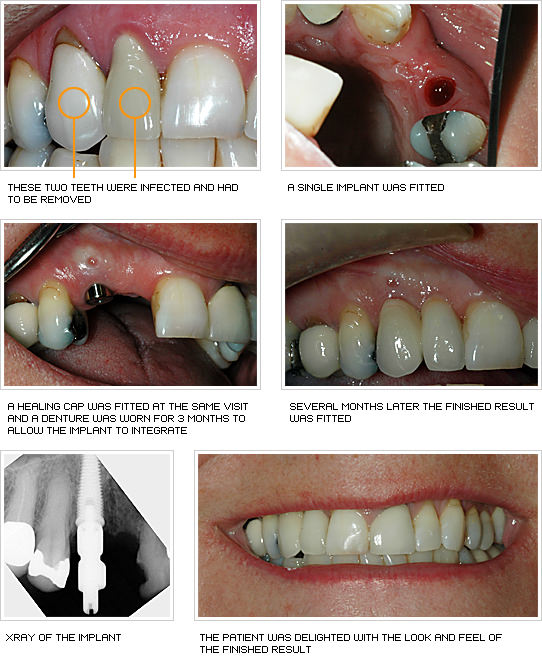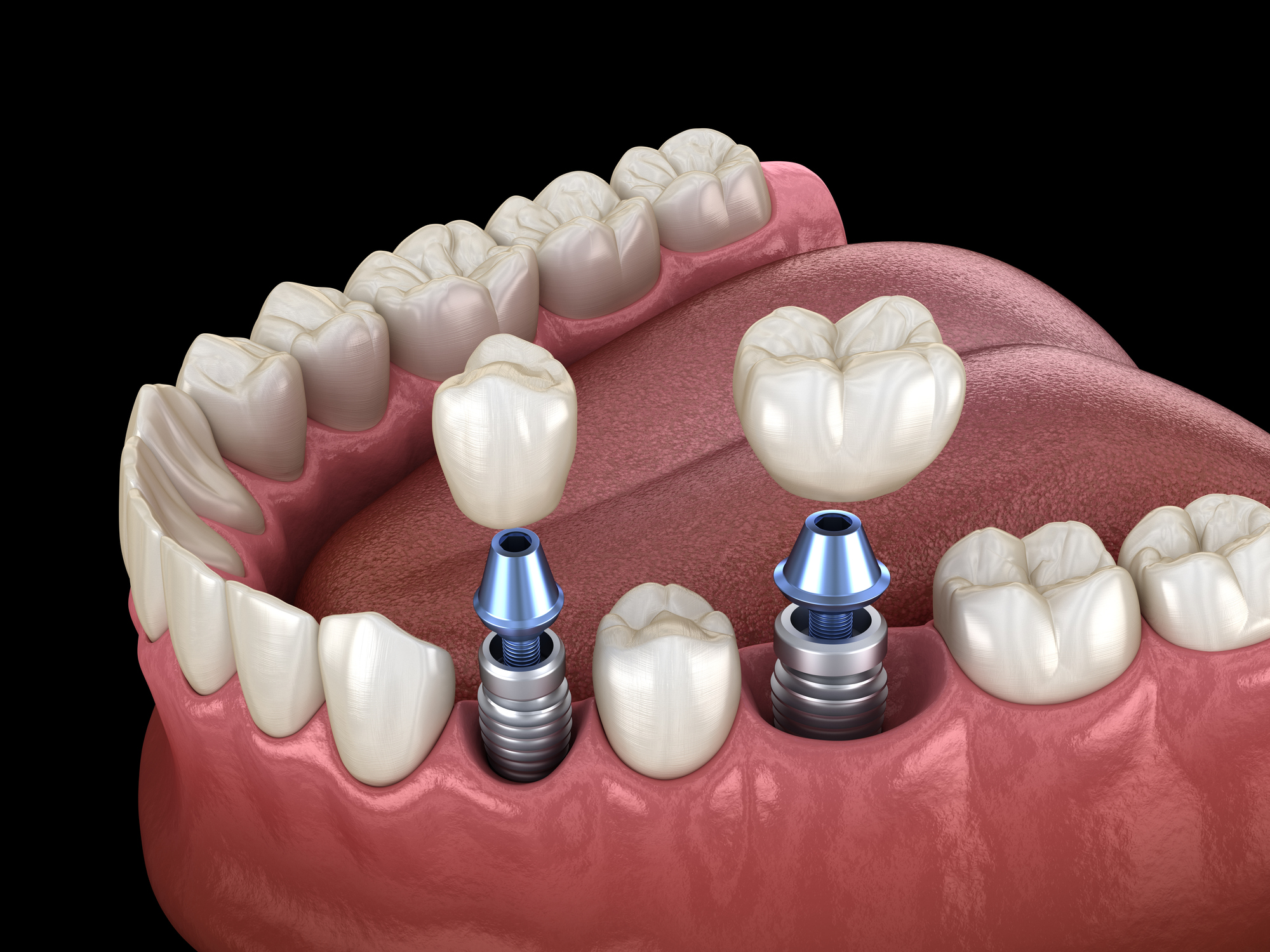How Dental Sense can Save You Time, Stress, and Money.
How Dental Sense can Save You Time, Stress, and Money.
Blog Article
Not known Details About Dental Sense
Table of ContentsThe smart Trick of Dental Sense That Nobody is Talking AboutWhat Does Dental Sense Do?Rumored Buzz on Dental SenseThe Only Guide for Dental Sense
are medical devices surgically implanted into the jaw to restore a person's ability to chew or their look. They give support for artificial (fake) teeth, such as crowns, bridges, or dentures. When a tooth is shed as a result of injury or condition, a person can experience difficulties such as fast bone loss, defective speech, or modifications to eating patterns that cause discomfort.Dental implant systems contain a dental implant body and dental implant abutment and might also consist of a joint addiction screw. Wisdom tooth cavity. The dental implant body is operatively placed in the jawbone in location of the tooth's root. The oral implant joint is usually connected to the implant body by the joint addiction screw and expands through gums into the mouth to support the attached synthetic teeth
(https://penzu.com/p/6de5c74cda18cc8f)Framework of The Dental Implant System selecting dental implants, speak to your dental provider concerning the potential advantages and dangers, and whether you are a candidate for the procedure. Points to take into consideration: Your total health is an important factor in establishing whether you are a great prospect for dental implants, the length of time it will certainly require to heal, and the length of time the implant might remain in area.
Smoking cigarettes might affect the recovery procedure and decrease the lasting success of the implant. The recovery procedure for the dental implant body might take numerous months or longer, during which time you commonly have a temporary joint in location of the tooth. the dental implant treatment: Meticulously follow the oral health directions offered to you by your oral provider.
Fascination About Dental Sense
Implant failure can result in the requirement for one more operation to repair or change the implant system. Restores the ability to eat Restores cosmetic look Aids keep the jawbone from reducing as a result of bone loss Maintains the health and wellness of the surrounding bone and gums Assists keep adjacent (nearby) teeth stable Improves quality of life Damages to bordering natural teeth throughout implant positioning Injury to the surrounding cells during surgical treatment, such as sinus perforation Injury throughout surgical procedure (for example, fracture of bordering jawbone) Poor feature, such as seeming like the teeth do not bite with each other usually An experience that the tooth is loose or twisting in position resulting from an abutment screw loosening up Implant body failure (looseness of the implant body) because of systemic infection, which may be extra likely in individuals with uncontrolled diabetics issues because of local infection in bone and gums supporting the implant body due to postponed recovery, which may be most likely in clients who smoke Problem cleaning up the gum tissues around the dental implant, leading to bad oral hygiene Neglected periodontal condition Post-surgical numbness because of nerve impingement or damages Always alert healthcare suppliers and imaging technicians that you have oral implants prior to any type of magnetic vibration imaging (MRI) or x-ray procedures.
FDA is not familiar with any type of damaging events reported for MRI or x-ray treatments with oral implants. Oral implants systems are generally made from products that comply with international agreement criteria of the International Company for Standardization (ISO) or ASTM International. These requirements have information of what makes a risk-free product.

An oral implant is a structure that replaces a missing tooth. With screw-like look what i found devices, the doctor inserts a dental implant right into the jawbone, and it acts as a support for a fabricated tooth, called a crown.
A Biased View of Dental Sense
Some individuals are not eligible for oral implant surgical procedure. It is for dental doctors to operate on individuals with: acute illnessuncontrollable metabolic diseasebone or soft cells condition or infectionIf these problems are fixed, a person can have the surgical treatment. In, dental doctors abstain from running on individuals with: If people with any of the above undertake oral implant surgical procedure, there is a greater danger of the implant falling short.

Dental dental implant surgical procedure is a personalized procedure. It's not the same for everyone. But the adhering to provides a general overview of what you can expect your dental professional, oral cosmetic surgeon, periodontist or prosthodontist to do: Put the dental implant operatively. Give you time to heal. Affix the article and last crown, bridge or denture.
Next, your surgeon will very carefully put the oral implant right into your jaw. Ultimately, your surgeon will certainly rearrange your gum tissues and shut the laceration with stitches. If your implant is near the front of your mouth, your dental professional will certainly make a short-lived tooth for you to use till you heal. This way, you won't have a space in your smile while you recoup.
The Only Guide to Dental Sense
Your company can inform you what to expect in your scenario. During the healing stage, your jawbone must fuse to the oral implant. This procedure, called osseointegration, is important for security and long-lasting success. This procedure can take anywhere from 3 to 9 months. Sometimes, it might take much longer.
Once your dental implant heals, your dental practitioner can affix the joint (small adapter blog post) and your last remediation (crown, bridge or denture). This generally takes regarding one hour to finish and might call for a second minor surgical procedure. You shouldn't feel any type of discomfort during your oral implant treatment due to the fact that your provider will certainly make use of medicine to numb your gum tissues.
Report this page